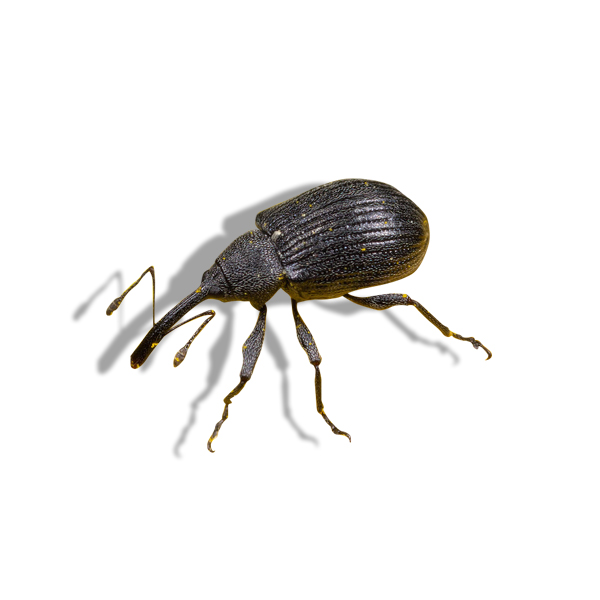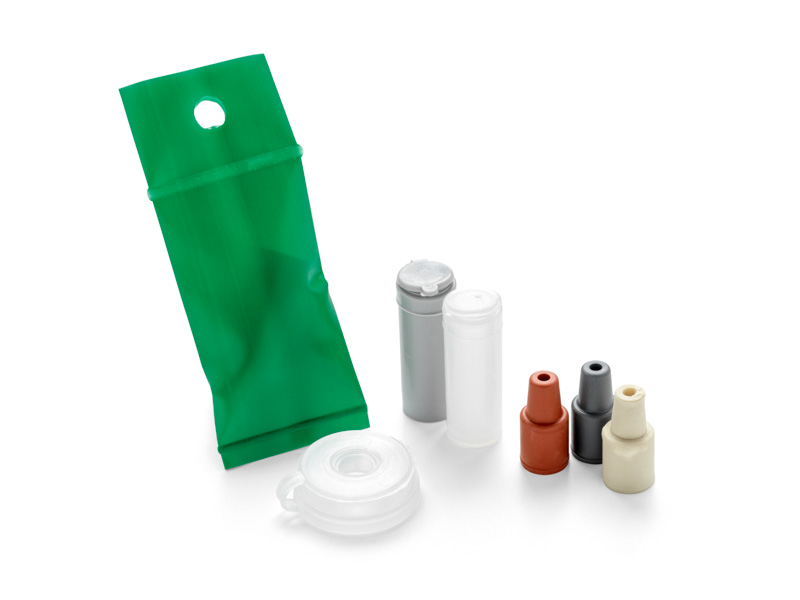Biology
Adult: Adult males and females are black, 2– 4 mm in length, with a scattered greyish pubescence and a long snout about 40% of the length of the body. If the individuals are disturbed, the snout and legs may be folded under the body. The antennae are inserted about two thirds of the distance down the snout from the base and are elbowed at the first segment. This first segment is longer than the total length of the remaining segments.
Eggs: Eggs are 0.5 x 0.4 mm in size, oval, white and translucent. They are found inside flower buds.
Larvae: Larvae are 3.5 mm long, dirty creamish-white, legless, with a brown head. The body has a noticeable C shape and is wrinkled. It is found inside severed, withered flower buds
Strawberry blossom weevils emerge as adults from debris at the bottom of hedgerows in April onwards on warm sunny days. They invade strawberry crops, with populations peaking around mid-May. After only a short time feeding, mating occurs. Females oviposit eggs within developing flower buds (one egg per bud). The females will then partially sever the stalk of the host plant just below the bud in which they deposited their egg, causing the bud to wither. Eggs hatch in 5–6 days and each larva feeds on the shrivelled receptacle and other floral parts beneath the canopy of withered petals and sepals. Larvae develop rapidly and are fully fed in about 2 weeks. Pupation occurs in situ and the new adults emerge about 2 weeks later. The overwintered adult weevils continue to reproduce and cause damage into late summer, moving to new crops or wild hosts such as wild rose or bramble that provide flower buds for oviposition. However, the new adults that emerge from the withered buds are not reproductively active and do not cause severing damage. They feed for a few weeks on young strawberry leaves but do not reproduce. They migrate to overwintering sites in August.
Nature of Damage
The female strawberry blossom weevil inflicts damage to their host plants flower buds by partially severing the stalk just under the bud. After mating, the female deposits eggs singly in unopened flower buds. Damage starts shortly after flower stem extension and continues until all flower buds have opened. The open flowers are not attacked in this way. Fortunately, the weevil often preferentially severs smaller secondary flower buds which have thinner flower stalks, rather than the primary blossoms. However, the first primary flower buds are prone to attack. Severing damage is usually patchy and most intense at the margins of fields close to the weevil’s overwintering sites or close to earlier flowering crops from which the invading adults have migrated.



